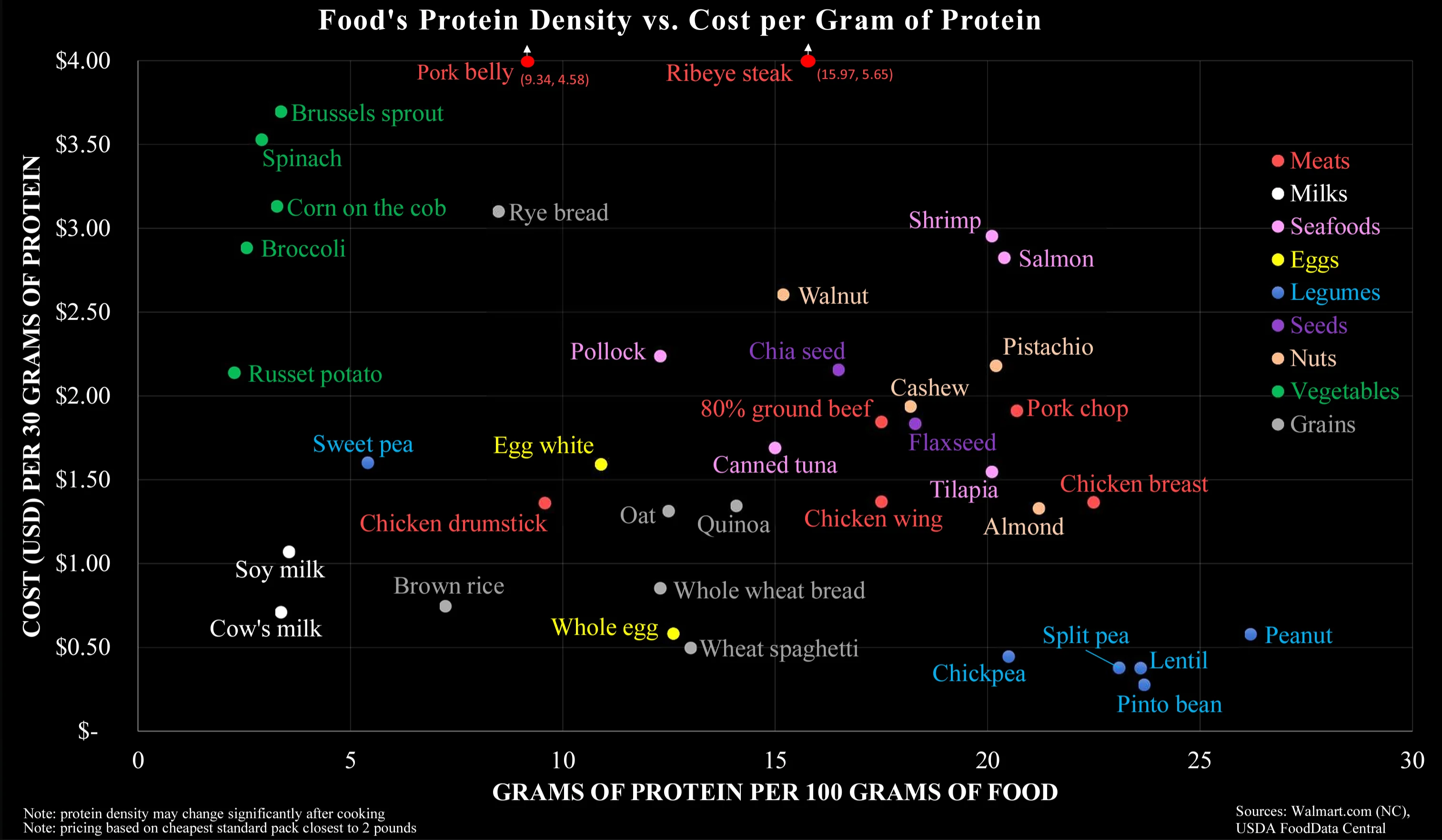this post was submitted on 16 Jun 2024
267 points (92.9% liked)
Data Is Beautiful
6884 readers
244 users here now
A place to share and discuss data visualizations. #dataviz
(under new moderation as of 2024-01, please let me know if there are any changes you want to see!)
founded 3 years ago
MODERATORS
you are viewing a single comment's thread
view the rest of the comments
view the rest of the comments

The legumes are pretty much bs though (except peanuts) as those are dry weight, cooked weight drops Pinto beans to 9 grams of protein. Protein density drops because bean weight increases through absorption.
What's wrong with reducing density through absorption (of water)?
Nothing at all. But it reduces protein density, so makes 25 grams of protein per 100 grams weight meaningless. No one is eating uncooked, dried pinto beans.
And meat would go the other way. Less fat and liquid after cooking. Doesn't change the overall amount of protein but does change how much you can consume at once.
Exactly. That would hold true for the green vegetables (that are cooked) as well, broccoli will become more protein dense through water loss.
This is not a problem with the nutrition of foods, it is the metric that is poorly designed. One more argument against the chart